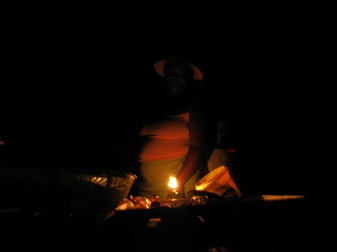Haitian energy context

Haiti is a beautiful Caribbean country full of thoughtful and enterprising people and full of potential. Nevertheless, the country is the least electrified in the Western Hemisphere.
Haiti's poverty goes hand in hand with its prevalent energy poverty, a lack of access to productive energy resources and efficient end-use technologies. Less than 25 percent of households in Haiti are connected to electricity grids, meaning that for the remaining 75 percent, lighting is produced chiefly from kerosene lamps, wax candles, and to a much lesser extent, private diesel or gasoline generators. The electricity infrastructure that does exist is plagued by unreliable generation, transmission, and distribution with total system losses thought to be about 50%. EarthSpark International market research has revealed that average rural Haitians spend 6.5% of their annual income on kerosene and candles for home lighting. According to figures available from the US EPA’s Energy Star program, the average American family spends just 0.5% of their annual income on electricity for home lighting. That’s a 13-fold difference and gives a clearer understanding of why Haiti’s energy intensity – the cost of converting energy into GDP - ranks the third highest in the Latin American and Caribbean region.
In response to this grave situation, EarthSpark developed its model to scale and multiply the delivery of clean energy technology in Haiti. At the end of 2009, we helped a community organization, in the rural town of Les Anglais, develop a store to supply clean energy technologies, education, and training. The store officially opened in July of 2010, with series of events centered around environmental issues in Haiti. The store is still in operation and EarthSpark has now expanded its programs to introduce "clean energy retail" through its Haitian brand Enèji Pwòp which means "Clean Energy" in Haitian Creole and has also recently launched the first prepay microgrid in Haiti through.
Haiti's poverty goes hand in hand with its prevalent energy poverty, a lack of access to productive energy resources and efficient end-use technologies. Less than 25 percent of households in Haiti are connected to electricity grids, meaning that for the remaining 75 percent, lighting is produced chiefly from kerosene lamps, wax candles, and to a much lesser extent, private diesel or gasoline generators. The electricity infrastructure that does exist is plagued by unreliable generation, transmission, and distribution with total system losses thought to be about 50%. EarthSpark International market research has revealed that average rural Haitians spend 6.5% of their annual income on kerosene and candles for home lighting. According to figures available from the US EPA’s Energy Star program, the average American family spends just 0.5% of their annual income on electricity for home lighting. That’s a 13-fold difference and gives a clearer understanding of why Haiti’s energy intensity – the cost of converting energy into GDP - ranks the third highest in the Latin American and Caribbean region.
In response to this grave situation, EarthSpark developed its model to scale and multiply the delivery of clean energy technology in Haiti. At the end of 2009, we helped a community organization, in the rural town of Les Anglais, develop a store to supply clean energy technologies, education, and training. The store officially opened in July of 2010, with series of events centered around environmental issues in Haiti. The store is still in operation and EarthSpark has now expanded its programs to introduce "clean energy retail" through its Haitian brand Enèji Pwòp which means "Clean Energy" in Haitian Creole and has also recently launched the first prepay microgrid in Haiti through.
|
|
